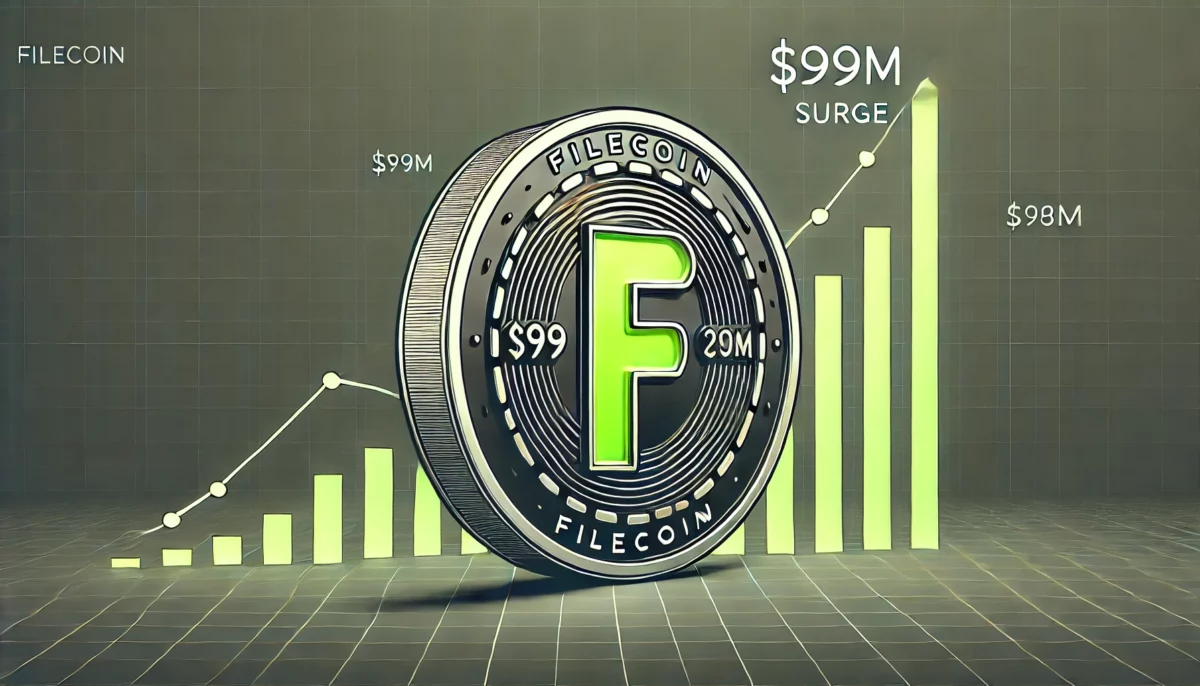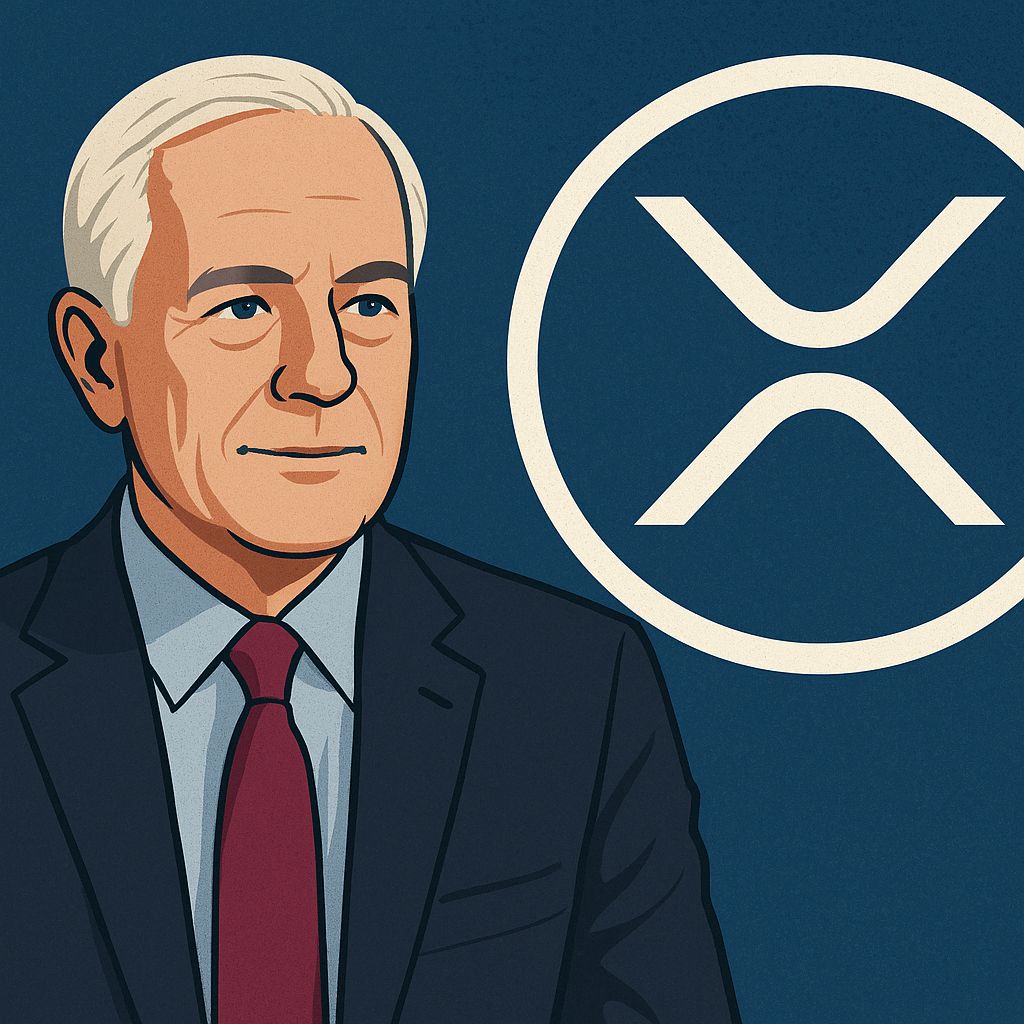Weekly Recap | Bitcoin First Breaks $100,000; South Korea Market Turbulence with Surge in Trading Volume, Now Accounting for 9.05% of Global Total
Cryptocurrency Market Cap Surpasses $3.8 Trillion, Bitcoin Achieves All-Time High Monthly Gain; Putin States Bitcoin and Digital Assets Are Unstoppable Forces; Altcoin Market Resurges, Led by Public Chain and DeFi Tokens; Financial Times Issues Public Apology for Its Long-Term Negative Coverage of Cryptocurrency
BlockBeats will organize the key industry news of the week (12.2-12.8) in this article, and recommend in-depth articles to help readers better understand the market and stay informed about industry trends.
Important News Review
Bitcoin Makes Historic Breakthrough Above $100,000, Market Cap Rises from Zero to $1.97 Trillion in 16 Years
On December 5, Bitcoin made a historic breakthrough above $100,000, with its market cap rising from zero to $1.97 trillion in 16 years. On October 31, 2008, Satoshi Nakamoto published the Bitcoin whitepaper "Bitcoin: A Peer-to-Peer Electronic Cash System" on the P2P Foundation website. The Bitcoin network was officially launched on January 5, 2009, with an initial trading price of $0.0008. On the same day, Trump posted on social media: "Congratulations to Bitcoin holders!!! $100,000!!! You're welcome!!! Let's work together to make America great again!" Related reading: "The Unstoppable Bitcoin: From $0 to $2 Trillion in 16 Years"
Crypto Market Cap Surpasses $3.8 Trillion; Bitcoin Sets Record for Largest Monthly Gain, Closing November at $96,407.99
On December 2, according to market data, Bitcoin closed November at $96,407.99, with an initial price of $70,292.01, marking a historic monthly price surge of $26,115.98. Economist Carl Menger stated that this is just the "beginning" of Bitcoin's journey. Crypto analyst Aksel Kibar noted that the "breakout on a monthly scale has been confirmed." On December 5, the total crypto market cap exceeded $3.8 trillion, with a 24-hour increase of 3.8%, reaching a new all-time high.
Altcoin Market Shows Signs of Recovery, Led by Public Chains and Defi Tokens
On December 4, the Altcoin Season index surged to a new annual high of 90. According to TradingView data, Bitcoin dominance (BTC.D) dropped to 51.4%, a decrease of 10.38% from the current bull market peak on November 21 (61.78%). Furthermore, since November 5, the total crypto market cap excluding BTC (TOTAL2) has seen a unilateral uptrend, rising by about 98.8% from its bottom of $856.1 billion on November 5. Tokens such as XRP, BNB, HYPE, SUI, and ENA all reached new historical highs or saw significant gains this week. Related reading: "Setting New Highs – How to Understand the Pump Logic of ENA and HYPE?", "What's the Secret Behind XRP's Sharp Rise?"
Putin: Bitcoin Better than Reserve Currency, No One Can Ban Bitcoin
On December 5, Russian President Putin questioned the need for holding national foreign currency reserves, as these reserves can easily be confiscated for political reasons. He suggested that investing such reserves domestically would be more attractive. Putin stated that the current U.S. government is using the dollar for political purposes, undermining its role as a global economic reserve currency, forcing many countries to turn to alternative assets including cryptocurrency. Putin firmly asserted that Bitcoin and digital assets are unstoppable and will continue to develop.
South Korean President Initiates "Emergency Martial Law," Triggering Wild Fluctuations in South Korean Crypto Exchanges, National Assembly Declares Martial Law Invalid Hours Later
On the evening of December 3, South Korean President Yoon Suk-yeol suddenly delivered a televised address, announcing the implementation of "emergency martial law." Yoon listed multiple reasons, claiming that the opposition party was manipulating the National Assembly, causing turmoil in the country, and stating that he would eradicate "anti-state forces" within South Korea. This immediately sparked intense fluctuations in the South Korean crypto market, with Bitcoin on the Upbit platform "spiking" to $71,814 and various altcoin prices on the platform experiencing a "flash crash." The South Korean National Assembly held an emergency meeting in the early hours of December 4 to vote on "requesting the lifting of the emergency martial law." 170 members of the assembly voted in favor, and National Assembly Speaker Yoo Eui-yeol subsequently announced the invalidity of the emergency martial law. Related Reading: "Korea 312 Approaches, Mainstream Cryptocurrencies Flash Crash 50% | Real-time Updates"
South Korea's Virtual Asset Trading Volume Surges, Currently Accounting for 9.05% of Global Total
On December 3, according to South Korean media reports, in November 2024, the monthly total trading volume of stablecoins on the top five CEXs in Korea—Upbit, Bithumb, Coinone, Korbit, and GOPAX—was approximately 161.7 trillion Korean won ($115 billion). This figure includes the total trading volume of stablecoins such as Tether (USDT) and USDC issued by Circle, and has increased sevenfold compared to the approximately 20 trillion Korean won recorded at the beginning of the year. This is also the first time South Korea's monthly stablecoin trading volume has exceeded 100 trillion Korean won. Additionally, as of Monday, the 24-hour trading volume of South Korea's domestic virtual asset market was 230 trillion Korean won, accounting for 9.05% of the global total of 2,620 trillion Korean won. Analysis suggests that the surge in stablecoin trading may be related to South Korean cryptocurrency investors moving their assets overseas. Related Reading: "Martial Law Impact on South Korean Crypto Market: $33.3 Billion Sell-off and Exodus of Native Projects"
Trump Confirms Paul Atkins as SEC Chairman
On December 5, Trump confirmed Paul Atkins as the chairman of the U.S. Securities and Exchange Commission. Paul Atkins has served as an advisor to Reserve Protocol in recent years, with Reserve Rights (RSR) being the native utility token of the Reserve stablecoin platform on Ethereum. Related reading: "Paul Atkins Elected SEC New Chairman, Where Will Crypto's Future Go?"
Trump Appoints David Sacks as Cryptocurrency Czar
On December 6, Trump appointed PayPal co-founder David Sacks as the "White House AI and Cryptocurrency Czar." David will be responsible for shaping policies in artificial intelligence and cryptocurrency for this administration, as these two areas are crucial for America's future competitiveness. David will focus on making the U.S. a global clear leader in these two fields. He will champion free speech on the internet and avoid biases and censorship brought by big tech companies. David Sacks is a South African-born American entrepreneur, writer, and investor in internet technology companies. He is a general partner at Craft Ventures, a venture capital foundation. Previously, Sacks was the COO and product leader at PayPal (acquired by eBay for $1.5 billion in 2002) and the founder and CEO of Yammer (acquired by Microsoft for $1.2 billion in 2012). Related reading: "Trump's Designated Cryptocurrency Czar, Which Projects Have They Invested In?"
"Financial Times" Publicly Apologizes for Its Long-Term Negative Coverage of Cryptocurrency
On December 5, the "Financial Times" Alphaville column issued an "apology letter" as their coverage over the past 14 years may have left readers skeptical of cryptocurrency. In the letter, they stated: "If at any point over the last 14 years you missed out on purchasing an appreciating asset based on our coverage, we are deeply sorry. At the same time, we are delighted for your current holdings. If you believe our prior cynical stance on cryptocurrency was a show of support for traditional finance, we are also deeply sorry as we hate that behavior too."
Blue-Chip NFT Floor Price Rebounds, BAYC Floor Price Up 35.82% in 7 Days
On December 6, according to Blur market data, the floor prices of blue-chip NFT collections rebounded, with the following values: Bored Ape Yacht Club (BAYC) currently at 21.5 ETH, up 35.82% in the last 7 days; PudgyPenguins at 16.4 ETH, up 21.95% in the last 7 days; Azuki at 6.15 ETH, up 21.78% in the last 7 days; Mutant Ape Yacht Club (MAYC) at 3.94 ETH, up 60.88% in the last 7 days.
Pudgy Penguins Launches Native Token PENGU on the Solana Network
On December 6, Pudgy Penguins announced the launch of their native token, PENGU, with a total supply of 888,888,888 tokens, to be deployed on Solana. The token distribution is as follows: Current and future team (1-year lockup, 3-year vesting): 17.8%; Expansion: 4%; FTT holders: 0.35%; Liquidity: 12.35%; Public Coordination: 4%; Pudgy Community: 25.9%; Company (1-year lockup, 3-year vesting): 11.48%; Other Communities: 24.12%.
Magic Eden Airdrop Query Now Open, TGE Scheduled for December 10
On December 5, Magic Eden opened the airdrop query. Previously, Magic Eden released the ME tokenomics, with a total token supply of 1 billion, where 12.5% (125 million tokens) will be immediately unlocked and airdropped to eligible Magic Eden users, and an additional 22.5% of the supply (225 million ME tokens) will be reserved to incentivize future users of the ME Foundation's protocols and platform. According to pre-market trading data from Aevo, ME is currently priced at $3.51. Read more: "Magic Eden Airdrop Is Live: How to Claim? Can It Reignite the NFT Market?"
World's Largest Bitcoin Mining Pool Operator Foundry Cuts 27% of Workforce; Circle Announces Nearly 6% Layoffs
On December 4, it was reported that Foundry, the world's largest Bitcoin mining pool operator, laid off 27% of its workforce as part of a planned restructuring. The layoffs included 16% of the Foundry U.S. team and a portion of the Indian team, sources said. Foundry's parent company, DCG, revealed in a November shareholder letter plans to spin off Foundry's self-mining business into a separate entity still controlled by DCG. In a statement, Foundry said, "We recently made a strategic decision to focus on the core business of Foundry – operating the world's largest Bitcoin mining pool and expanding our on-the-ground operations, supporting the growth of DCG's new subsidiary, including the successful spin-off of Foundry's self-mining business. As part of this adjustment, we made the difficult decision to reduce the number of employees at Foundry, resulting in layoffs across multiple teams."
On December 5, stablecoin issuer Circle Internet Financial Ltd. announced that as part of a routine operational review, the company has conducted layoffs. A Circle spokesperson stated that the number of layoffs represented less than 6% of Circle's total workforce, and the company will continue to invest in AI-driven regional growth, efficiency, and productivity. Circle will regularly review investments and expenses, including investing in teams and operational infrastructure needed for growth, while slightly reducing spending in other business areas and some positions.
Ripple: Stablecoin RLUSD is in Final Approval Process with NYDFS
On December 5, Ripple posted on social media: "Despite some speculation, RLUSD will not be launched today. We are in sync with the New York Department of Financial Services (NYDFS) for final approval and will share the latest updates soon. The team is fully committed to launching the product under NYDFS supervision and adhering to the highest regulatory standards." Fox Business reporter Eleanor Terrett commented that two sources close to the process indicated that today was the expected launch date, but some last-minute developments caused a delay.
November Cryptocurrency Trading Volume Surpasses $10 Trillion for the First Time, CEX Monthly Spot Trading Volume Grows 128%
On December 5, cryptocurrency trading volume hit a historic high, with the digital asset trading volume on centralized spot and derivatives exchanges surpassing $10 trillion for the first time. CEX's monthly spot trading volume grew by 128% to reach $3.43 trillion, marking the second-highest level since May 2021. Data showed that derivatives trading volume surged by 89% to $6.99 trillion, exceeding the historical peak in March, with the data excluding DeFi platform trading volume.
This Week's Popular Articles
《Paul Atkins Elected as SEC New Chairman, What's in Store for Crypto's Future?》
In the early hours of December 5, Trump announced on Truth Social that Paul Atkins has been elected as the Chairman of the U.S. Securities and Exchange Commission. Aged 66, Paul Atkins is a former SEC commissioner during the George W. Bush administration, known for his opposition to "imposing hefty fines on companies for violating securities laws" and previous opposition to the Dodd-Frank Act that strengthened federal regulatory powers following the 2008 financial crisis.
"Which Projects Has Trump's Cryptocurrency Czar Invested In?"
On December 6, following Trump's announcement of appointing Paul Atkins as SEC Chairman, Trump appointed PayPal co-founder David Sacks as "White House Coordinator for Artificial Intelligence and Cryptocurrency." Trump introduced David Sacks as follows, "He has been an extremely successful entrepreneur and investor over the past 25 years, having been involved in building and investing in some of Silicon Valley's most iconic companies. He was the COO of PayPal in its early days and was one of the legendary 'PayPal Mafia' members. In 2017, he founded the venture capital firm Craft Ventures, and Craft Ventures' crypto investments have covered 12 projects, with infrastructure being the main focus."
Since October, getting listed on CEX has become a new art. Whether it's ACT, PNUT, or MOODNEG, numerous individuals have become wealthy due to these new coin listings. Every batch of players who anticipate these potential listings holds their breath when CEX announces, hoping to be the lucky one. Besides early anticipation, there is a group of players like Xiao Z who focus on studying CEX announcements, forming a 'listing announcement trading' strategy.
"South Korea's 312 Arrives, Mainstream Cryptocurrencies Experience 50% Flash Crash"
On the evening of December 3, influenced by South Korean President Yoon Suk-yeol's martial law order, South Korea's mainstream cryptocurrency exchange Upbit experienced a flash crash, resulting in severe negative premium situations for many trading pairs. During this event, the price of BTC briefly dropped below $70,000, and DOGE experienced a flash crash of over 50%. Additionally, recently surging "zombie coins" such as XRP, HBAR, XLM also underwent substantial retracements, once again staging a "regional 312." Following the Upbit flash crash, the crypto market also experienced an overall decline. The significant negative premium also provided arbitrage traders with a rare profit opportunity, and many Korean KYC-verified traders eagerly entered the battlefield.
This article provides an in-depth analysis of Solana's recent performance, discussing potential challenges from various angles such as supply events, competitive pressure, and complacency, and predicts the future market trend. The author, through data and market observations, reveals potential concerns about Solana's fund flows, ecosystem competition, and investor behavior. The author believes that Solana may underperform compared to other assets in December (he believes this trend has already begun and will continue).
Bitcoin Never Surrenders: From $100,000 to $2 Trillion in 16 Years for a Single Coin
On December 5, 2024, a single Bitcoin is worth $100,000, hitting a historical high with a market cap of $2.1 trillion, officially entering the six-digit range. The once seemingly unattainable and almost whimsical $100,000 is now history. Behind the market value of any asset going from zero to trillions of dollars, there must be a magnificent story, and Bitcoin is no exception. Being in the midst of it, we especially feel that the journey of Bitcoin over the past decade can only be described as magical. The Bitcoin network was officially launched on January 3, 2009, with an initial transaction price of $0.0008. At the price of $100,000, Bitcoin's increase exceeds 125 million times. Let's go back to the origin of crypto and commemorate the release of the Bitcoin whitepaper.
BTC Violent Washout Plunge, Long-Term Holders Selling Signals Bull Market "Standard"?
On December 6, after hitting a historical high of nearly $104,000 yesterday, Bitcoin experienced a massive fluctuation around 6:30 AM Beijing time on December 6, quickly plunging to around $91,000 in a few minutes, causing a large-scale market liquidation. Data shows that in the past 24 hours, nearly 210,000 investors have been liquidated, totaling over $1 billion, with long positions dominating. At the time of writing, the BTC price has rebounded to above $97,000. This plunge did not affect other altcoins.
《How Did "Zombie Coins" Suddenly Come Back to Life?》
Wasn't it agreed that in a bull market, we wouldn't hype old projects? What is XLM? And what about HBAR? Why have they both been inexplicably pumping recently? Who is buying these "zombie coins"? In a nutshell: institutional buying, led by the U.S., and retail buying, led by Japan and South Korea. But it's not just old coins; many compliant coins (including XRP, HBAR, XLM mentioned above) have also started pumping.
《XRP Returns to Third Place in Crypto Market Cap, What's Driving Its Surge?》
Data on December 2 shows that XRP's market cap once exceeded $136.2 billion, surpassing USDT to reclaim its position as the "third largest cryptocurrency by market cap," returning to pre-2020 SEC/Ripple lawsuit levels. Overall, XRP's market cap surge is mainly driven by various macro and micro bullish factors, with macro factors including expectations of Trump taking office to help settle the "XRP vs SEC" dispute. Micro factors include the locking of 1 billion XRP and the upcoming stablecoin launch.
《XRP Revitalized, What Potential Hot Memes Are in Its Ecosystem?》
This weekend, the market's attention was ignited by XRP's amazing performance. This "ancient project" founded in 2012 has shown unexpected vitality, with a 24-hour surge of over 30%, surpassing Solana in market cap and jumping to third place in the cryptocurrency market cap rankings. Currently, the Ripple ecosystem still appears weak in infrastructure areas such as DeFi, and related projects may not be the best choice. In contrast, some interesting opportunities in meme coins have quietly emerged in the ecosystem.
《WSJ: Behind the Bitcoin Frenzy, Risks of MicroStrategy Stock Leverage Emerge》
This article analyzes leveraged funds launched by Tuttle Capital and Defiance ETFs, focusing on MicroStrategy stock to amplify its Bitcoin-related returns. These funds use derivatives and options for leverage but face liquidity issues, resulting in underperformance. Investors are disappointed with the funds' skewed performance, and critics warn that these funds exacerbate MicroStrategy's stock price volatility, posing risks that could lead to losses.
《Market Rebound and Airdrop Frenzy Again: Recent Upcoming TGE Projects Overview》
Lately, with the recovery of the crypto market, on-chain liquidity has decreased, and hot money has started to move to the secondary market. Several previously inactive protocols or projects have accelerated their mainnet launch and token TGE processes, especially in the DeFi and L1 race. To help readers better understand the market dynamics, BlockBeats has compiled and listed some of the projects that are about to TGE or have already TGE recently.
《How Can You Become Smart Money?》
This article mainly explains that market trading is not entirely controlled by "smart money" as some popular trading theories suggest, but is based on the interaction of market depth and order flow. Large traders execute orders by selecting areas with sufficient liquidity to avoid additional trading costs. Traders should focus on the actual structure of the market and the movements of participants, rather than overly mystifying market operations.
《Rise of AI Agent Narrative: Can Attention Spark Price?》
This article, based on the rising popularity of AI agents, discusses the increasingly important role of AI agents in DeFi. An analysis is conducted on the match between the attention to AI agents and their market value, suggesting that "intelligent interaction" may better reflect market potential. The article also introduces new platforms such as Injective and ModeNetwork, emphasizing the importance of innovation, market leadership, and cash flow for the success of AI agents.
A16Z released a comprehensive list of "Big Ideas" that technology builders may tackle in the coming year, encompassing artificial intelligence, US vitality, biotech/health, crypto, enterprise, fintech, gaming, infrastructure, and other areas. The crypto industry will see the advent of a decentralized app store, driving the distribution of crypto apps and increasing user engagement. As infrastructure matures, more industries will tokenize unconventional assets, particularly opening up new economic opportunities in healthcare and personal data management.
《Do You Really Know How to Play Base Gold Shovel Clanker?》
There are two major shovels on Base: Virtual and Clanker. The former is an AI agent platform that has been around for nearly a year. Recently, Base has been flooded with a massive amount of liquidity, causing the price of $VIRTUAL to skyrocket to a market cap of over 1.8 billion. The latter is a post-to-mint AI agent tool on Farcaster, born from the grassroots and only 20 days old. The flagship meme $CLANKER has surged over 140 million. Both have spawned countless myths of a thousandfold riches.
《Old-school Public Chains Pumping Hard, Finding Hundredfold Opportunities on Meme Launchpads》
Everyone underestimated the resilience of old-school public chains. After the end of the new public chain craze, it's time for the old-school public chains to shine. Apart from directly investing in the mainstream coins of these old-school public chains, the meme coins in their ecosystems may also hold hidden opportunities for hundredfold growth. And to find these hundredfold opportunities, keeping an eye on these Meme Launchpads is a great way.
《DeFi Mining, "Trash" Recycling, What's New with Solana Meme?》
In the second half of the meme race, in addition to PvP on Sol, stuffing the inner disk on Base Virtual, meme gameplay has also been updated with more and more variations. Repump has started recycling "trash" memecoins, and Farmer meme is attracting users to provide liquidity through high APR. The capital in the meme race is gradually overflowing into the services and narratives surrounding the meme storyline.
《Value Coins Rejuvenating, Who Is Really Profiting from So Much Infrastructure? | Fintech Pulse》
Infrastructure seems to be the eternal topic of Crypto. While Infra is not as direct and user-facing as applications like DeFi, it always receives endorsements from top institutions behind the scenes. With a stable track, a replicable pattern, and a steady income stream, technology purists and industry giants seem uninterested in dabbling in the high-risk realm of Mass Adoption. More and more high FDV projects are emerging like mass-produced industrial goods. Overnight, VC coins have become the universally condemned pariahs, and the endless infrastructure has brought the industry to the ultimate question: do we really need so much infrastructure? With this question in mind, this article selects mainstream projects in the Crypto infrastructure field as representatives to analyze their operational status, providing readers with a perspective on whether the current market's infrastructure should be liquidated.
《A Well-Known NFT Project Under Nike Actually Rugged》
Over the past 7 days, NFT blue-chips collectively rebounded. Both former top PFPs like CryptoPunks, BAYC, MAYC, Azuki, Doodles, and top generative art NFTs like Chromie Squiggle and Fidenza saw significant rebounds. In this harmonious atmosphere of recovery, Clone X, a blue-chip project with Nike background, announced its shutdown, shocking all NFT players just like announcing at a New Year's Eve dinner that they will no longer eat.
Disclaimer: The content of this article solely reflects the author's opinion and does not represent the platform in any capacity. This article is not intended to serve as a reference for making investment decisions.
You may also like
FIL Price Forecast: Explosive Growth Likely After Filecoin (FIL) v1.32.2 Upgrade

Teucrium CEO Endorses XRP as Essential for Future Financial Infrastructure

EURC Hits New Record as Demand Grows Across Blockchains

Strategy₿ Resumes Bitcoin Acquisitions, Buys $285.8M in BTC

